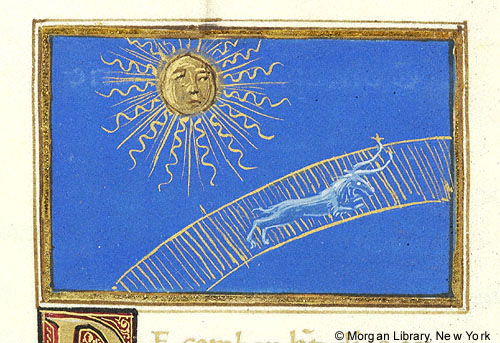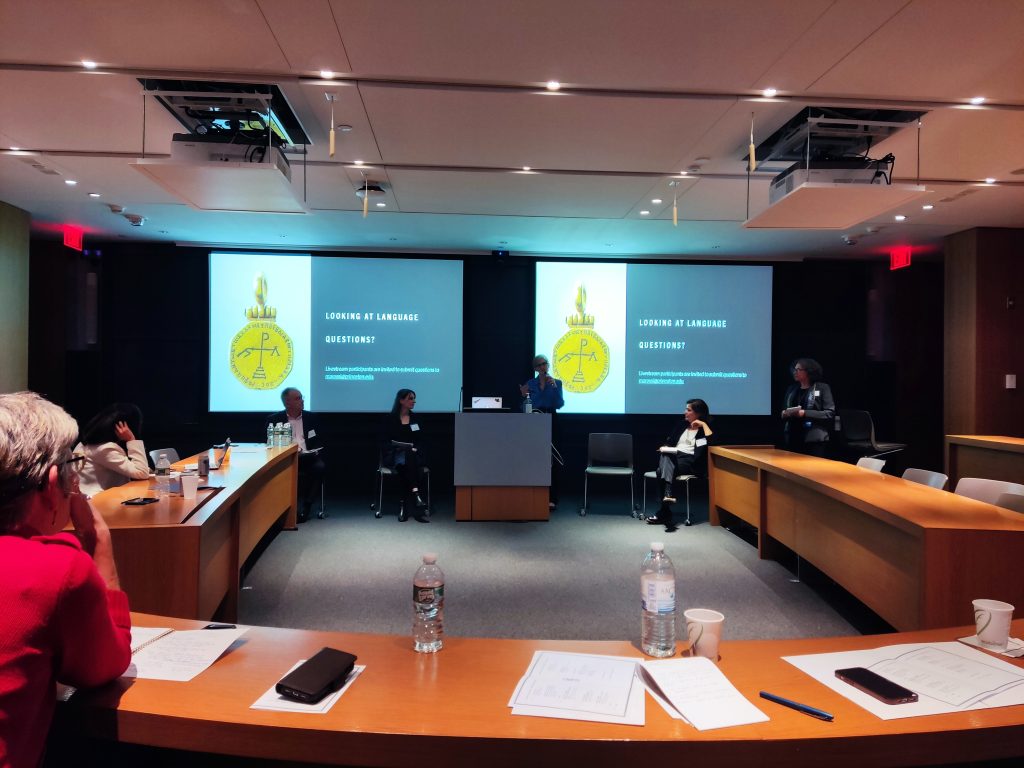


The Index of Medieval Art will close at noon this Friday, Dec. 23. The reading room will open to visitors on Dec. 28 and 28 and then resume its normal weekly schedule (9 am to 5 pm, Monday through Friday) beginning Jan. 3, 2023. As the days grow longer and winter begins, we share our best wishes for a warm, bright holiday season and promising New Year.

In November 2022 the Index of Medieval Art was pleased to award a Graduate Student Travel Grant to Johann Spillner, a doctoral candidate at the University of London to attend the Index Conference “Looking at Language.” He sends this reflection on his experience:
“It is the sign of a great conference when every paper, no matter how remote to one’s own field of interest, holds your attention. “Looking at Language,” held by the Index at Princeton this November, was certainly a great conference and I count myself lucky to have been able to attend in person due to the generous support of a travel grant from the Index. The papers which addressed, among other things, updates of language in manuscripts (Benjamin C. Tilghman); misspellings in mosaics (Warren T. Woodfin and Ludovico V. Geymonat); or fictional objects in vernacular narratives (Kathryn Starkey) were thought-provoking throughout. The presentation that has stuck with me the most is the one by Prof. Margaret S. Graves on “The Limits of Language,” in which she discussed the art historical bias towards the “talkative” artifact and served as a poignant finale to all the previous papers. Among the things that are still only possible when attending in person (apart from ingesting the excellent food provided by the Index) were the conversations during and after coffee breaks and at luncheon—here, I have to especially thank Prof. Ruba Kana’an for some enlightening and thought-provoking chats.
“While the conference alone was well worth my eight-hour transatlantic flight, the second highlight of my trip was certainly visiting the Index itself. Having only seen the online portal of the Index, the actual library and card indices have left a deep impression on me. My own research tries to address the formative power of art historical categorization and language, and standing in the Index itself, I could not help but feel that the Index, through countless years of sweat and, I imagine, a lot of tears, was the physical manifestation of that trajectory. There is something to be said for getting lost in the Index’s system and diving into the countless rabbit holes that the card index offers. While I started by looking at images of Stylites—Christian ascetics who lived out their lives atop of columns and pillars—my interest was caught by a different category of persons positioned next to various building parts: the unnamed nineteenth- and twentieth-century “staffage figures” who give a sense of scale or local color to the photographs of in-situ monuments. These do not represent a category of their own in the Index, but one can imagine the countless stories encapsulated in these photographs.

“All this is to say that my research at the Index was a joyful and stimulating journey. At this point, I would like to thank the Index of Medieval Art, and especially Pamela Patton, Fiona Barrett, and Jessica Savage for the support and their kindness that enabled me to come to Princeton. Special thanks to Jessica Savage for not only sacrificing her time and patience to teach me the ins and outs of the Index system but also accompanying me on my aberrations during my stay.”
And the Index thanks YOU, Johann, for traveling to join us and for sharing your experience with our readers. We hope to see you again soon.
Johann Spillner is a PhD candidate at the University of London, Birkbeck College in the Department of History of Art. His research focuses on Islamic architectural objects in Western museums, more specifically, what their removal, display and representation mean for the subsequent reading of these objects.